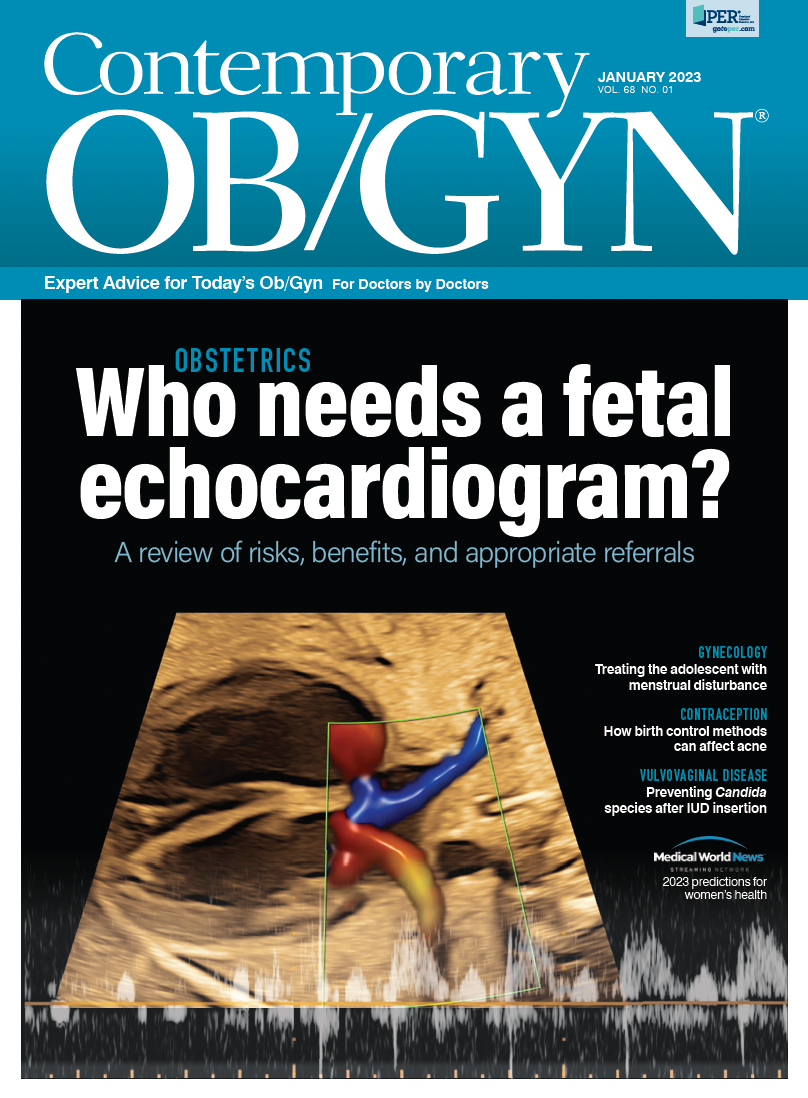Egg donors and recipients with PCOS
No “double disadvantage”
Patients with polycystic ovary syndrome (PCOS) who receive oocytes from women with PCOS have the same pregnancy and childbirth outcomes as do women without PCOS who receive similar oocytes, according to a study in BMC Pregnancy and Childbirth.1
Women with PCOS have long been able to participate in oocyte donation. “However,” study authors wrote, “the pregnancy outcomes and offspring follow-up in patients with PCOS as the recipients are unclear.”
In prior studies, both use of donor oocytes (DOs) and presence of PCOS in oocyte recipients have been shown independently to adversely affect obstetric and infant outcomes.2-5 “However,” authors wrote, “no study has investigated PCOS DO pregnancy outcomes and offspring follow-up. It remains unknown if the obstetric and infant outcomes of oocytes from donors with PCOS have a double disadvantage.”
Between March 2015 and May 2020, investigators at the Center for Reproductive Medicine and Infertility, Fourth Hospital of Shijiazhuang, in Hebei, China, enrolled 30 women with PCOS and 32 without PCOS. All recipients had to be less than 38 years old and undergoing their first single vitrified-warmed blastocyst transfer (SVBT). Oocytes came from PCOS-positive donors less than 30 years old.
For all patients, investigators used standardized oocyte preparation and implantation techniques, provided the same standard high-risk obstetric care, and consulted perinatology specialists when additional high-risk factors such as pregnancy-induced hypertension, gestational diabetes, or preterm birth (before 37 weeks) occurred.
Ultimately, rates of fertilization (around 75%), cleavage (around 98%), high-quality embryos (42% to 44%), and blastocysts (around 38%) did not differ significantly between the 2 groups.1 Similarly, rates of clinical pregnancy, implantation, ectopic pregnancy, and early abortion did not differ significantly.
All other data regarding pregnancy results, infant outcomes, and complications were comparable as well. For example, incidence of preterm births was 11.8% and 16.7% for women with and without PCOS, respectively (P >0.05). Consistent with previous research regarding DO recipient preferences,6 C-section rates were relatively high in both groups—80.0% and 86.7%, respectively (P = 0.624).
Few studies evaluate DOs from patients with PCOS. However, 2 such studies have shown similar pregnancy rates versus DOs from normal-appearing ovaries, along with similar fertilization, implantation, and miscarriage rates.7,8
In patients with PCOS, high luteinizing hormone levels reduce oocyte quality. Moreover, PCOS has a high familial prevalence. “Some researchers may worry about possible propagation of the condition in the next generation of PCOS DO programs,”9 authors wrote. Therefore, they suggest additional research focusing on PCOS incidence in offspring of PCOS-positive mothers who receive DOs from donors with PCOS.
Because the present study collected data only through the newborn period, authors added, future research should examine the long-term health of PCOS DO offspring, analyzing factors such as hyperandrogenism and insulin resistance. Due to the study’s small sample size, authors also recommend further research comparing outcomes between PCOS and non-PCOS DO recipients.
Additional topics needing research include PCOS etiopathogenesis. The syndrome stems from egg-related genetic factors and/or abnormal uterine factors, authors said, and studies like theirs allow isolation of oocytes from the hyperandrogenic PCOS uterine environment.
REFERENCES:
1. Jiang Y, Yuan JC, Song G, Zhang XH, Miao SB, Wu XH. Pregnancy outcome and follow-up of offspring of donor oocytes recipient from PCOS patients. BMC Pregnancy Childbirth. 2022;22:779. Published 2022 Oct 19. doi:10.1186/s12884-022-05114-y
2. Jeve YB, Potdar N, Opoku A, Khare M. Donor oocyte conception and pregnancy complications: a systematic review and meta-analysis. BJOG. 2016;123(9):1471-1480. doi:10.1111/1471-0528.13910
3. Boomsma CM, Fauser BC, Macklon NS. Pregnancy complications in women with polycystic ovary syndrome. Semin Reprod Med. 2008;26(1):72-84. doi:10.1055/s-2007-992927
4. Kushnir VA, Khanna P, Barad DH, Gleicher N. Establishment of comparative performance criteria for IVF centers: correlation of live birth rates in autologous and donor oocyte IVF cycles. Reprod Biol Endocrinol. 2014;12:122. Published 2014 Dec 4. doi:10.1186/1477-7827-12-122
5. Moreno-Sepulveda J, Checa MA. Risk of adverse perinatal outcomes after oocyte donation: a systematic review and meta-analysis. J Assist Reprod Genet. 2019;36(10):2017-2037. doi:10.1007/s10815-019-01552-4
6. Stoop D, Baumgarten M, Haentjens P, et al. Obstetric outcome in donor oocyte pregnancies: a matched-pair analysis. Reprod Biol Endocrinol. 2012;10:42. Published 2012 Jun 6. doi:10.1186/1477-7827-10-42
7. Wong IL, Morris RS, Lobo RA, Paulson RJ, Sauer MV. Isolated polycystic morphology in ovum donors predicts response to ovarian stimulation. Hum Reprod. 1995;10(3):524-528. doi:10.1093/oxfordjournals.humrep.a135982
8. Cho M, Ambartsumyan G, Danzer H, Brennan K, Surrey M. The clinical ramifications of polycystic ovarian morphology in oocyte donors. J Assist Reprod Genet. 2013;30(2):233-238. doi:10.1007/s10815-012-9924-6
9. Ashkenazi J, Farhi J, Orvieto R, et al. Polycystic ovary syndrome patients as oocyte donors: the effect of ovarian stimulation protocol on the implantation rate of the recipient. Fertil Steril. 1995;64(3):564-567. doi:10.1016/s0015-0282(16)57793-0

